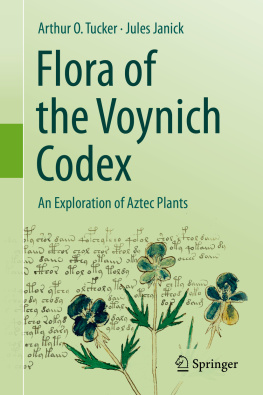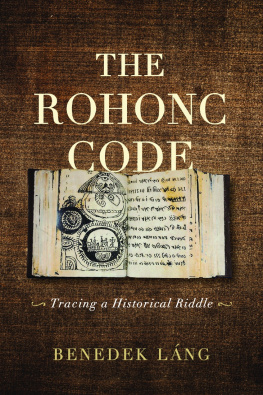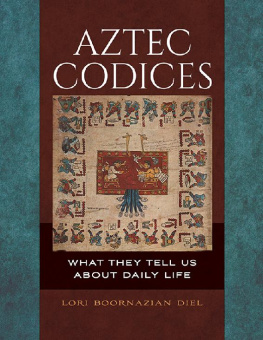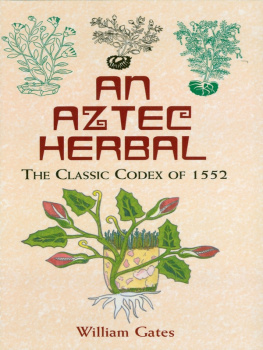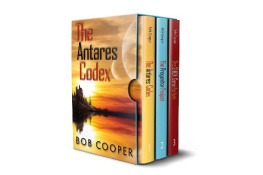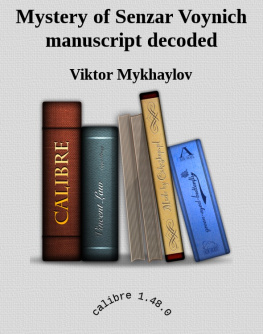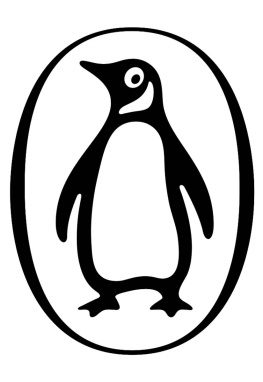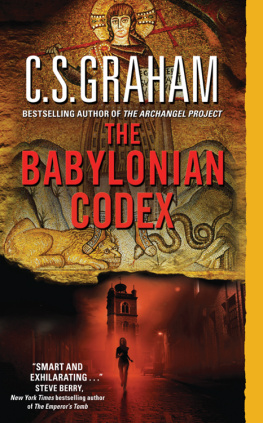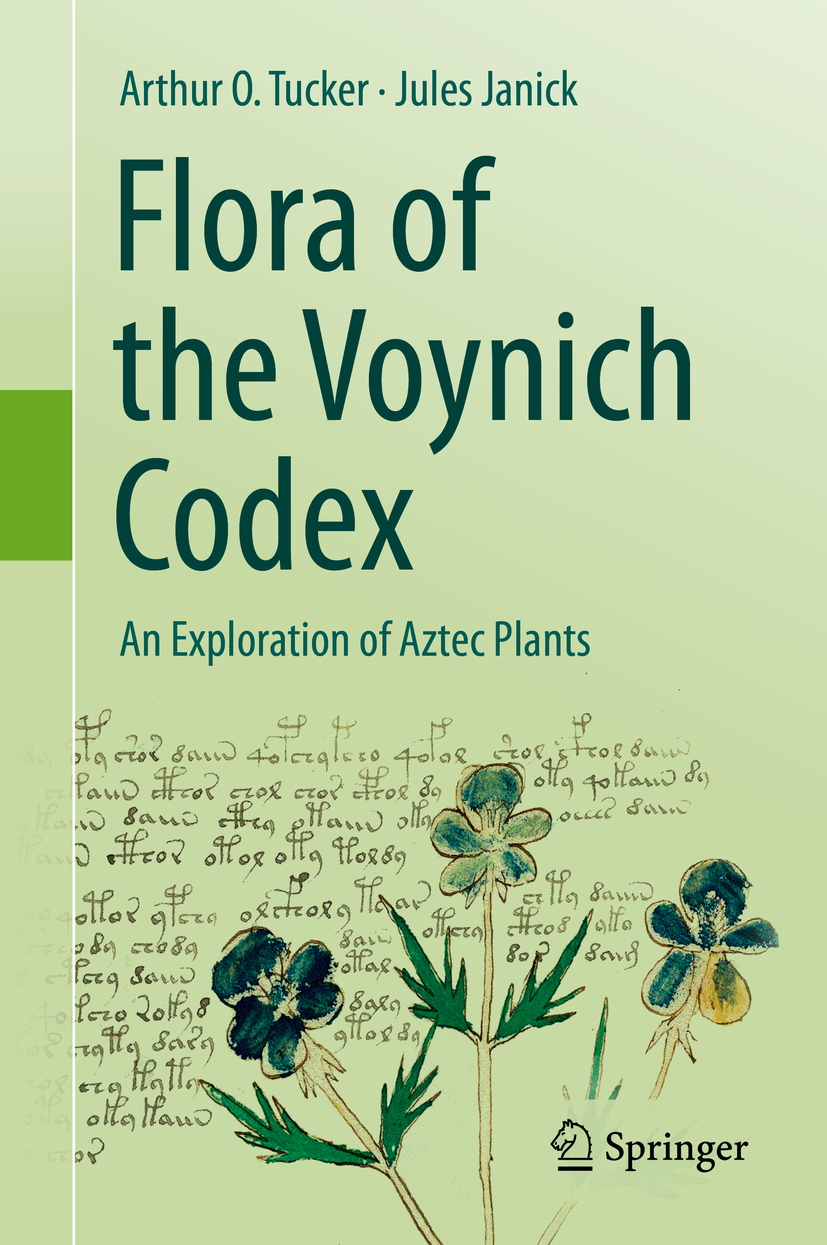Arthur O. Tucker and Jules Janick
Flora of the Voynich Codex
An Exploration of Aztec Plants
Arthur O. Tucker
Department of Agriculture and Natural Resources, Delaware State University, Dover, DE, USA
Jules Janick
Department of Horticulture and Landscape Architecture, Purdue University, West Lafayette, IN, USA
ISBN 978-3-030-19376-8 e-ISBN 978-3-030-19377-5
https://doi.org/10.1007/978-3-030-19377-5
Springer Nature Switzerland AG 2019
This work is subject to copyright. All rights are reserved by the Publisher, whether the whole or part of the material is concerned, specifically the rights of translation, reprinting, reuse of illustrations, recitation, broadcasting, reproduction on microfilms or in any other physical way, and transmission or information storage and retrieval, electronic adaptation, computer software, or by similar or dissimilar methodology now known or hereafter developed.
The use of general descriptive names, registered names, trademarks, service marks, etc. in this publication does not imply, even in the absence of a specific statement, that such names are exempt from the relevant protective laws and regulations and therefore free for general use.
The publisher, the authors, and the editors are safe to assume that the advice and information in this book are believed to be true and accurate at the date of publication. Neither the publisher nor the authors or the editors give a warranty, express or implied, with respect to the material contained herein or for any errors or omissions that may have been made. The publisher remains neutral with regard to jurisdictional claims in published maps and institutional affiliations.
This Springer imprint is published by the registered company Springer Nature Switzerland AG
The registered company address is: Gewerbestrasse 11, 6330 Cham, Switzerland
Cover image: The cover image, folio 94r of the Voynich Codex , is identified as Viola bicolor Pursh ( V. refinesquii Greene). The phytomorph clearly shows linear terminal stipular lobes as in the North American native V. bicolor , not spatulate as in the Eurasian V. tricolor L. Its blue flowers match V. bicolor in contrast to the tricolored ones of V. tricolor . The delineation of V. bicolor as native to the New World and not introduced from elsewhere, was only elucidated in 1961.
Reverend Dr. Hugh ONeill (18941969)
For Sharon L. Tucker, Patricia M. Ryan, and our children: Angelica, Arthur IV, Melissa, Peter, and Robin.
This book is dedicated to the memory of Dr. Arthur O. Tucker who sadly died on August 5, 2019 when this book was in press.
Preface
The mysterious Voynich Codex has been shown to be a sixteenth-century Mexican manuscript, on the basis of the presence of New World plants and animals and the presence of Mexican landmarks. The evidence dates to a seminal 1944 note by the Reverend Dr. Hugh ONeill, who reported the presence of sunflower and capsicum pepper in the Voynich Codex, clear evidence that the Voynich Codex must be post-Columbus because these two species are indigenous to the New World. This counterevidence to the almost universally accepted dogma that the codex was a European fifteenth-century manuscript was ignored, discounted, or explained away by most of the Voynich community, all non-botanists. The number of identified phytomorphs was increased to 37 (Tucker and Talbert 2013) and then to 58 (Tucker and Janick 2016). In our book, Unravelling the Voynich Codex, the count went up to 60 (Janick and Tucker 2018). This new work raises the number of phytomorphs identified as New World plants to 169 and provides evidence that the Voynich Codex must be included as one of the seminal contributions to sixteenth-century Mexican botany. Thus, we have titled this book Flora of the Voynich Codex: An Exploration of Aztec Plants . It is too early to know the reception of this work by an exuberant, albeit seemingly fanatical, community unable or unwilling to accept botanical evidence.
We dedicate this work to the memory of Hugh ONeill, who has been disregarded and vilified despite his credentials as a distinguished botanical taxonomist with outstanding work on tropical American flora.
Literature Cited
Janick, J., and A. O. Tucker, eds. 2018. Unraveling the Voynich Codex . Cham, Switzerland: Springer Nature Switzerland.
ONeill, H. 1944. Botanical observations on the Voynich MS. Speculum 19: 126.
Tucker, A. O., and J. Janick. 2016. Identification of phytomorphs in the Voynich Codex. Horticultural Reviews 44: 164.
Tucker, A. O., and R. H. Talbert. 2013. A preliminary analysis of the botany, zoology, and mineralogy of the Voynich manuscript. HerbalGram 100: 7085.
Arthur O. Tucker
Jules Janick
Dover, DE, USA West Lafayette, IN, USA
1. An Introduction to the Voynich Codex

